Today, I want to talk about something else, Dashain, the biggest festival celebrated by all Nepalese looms around the corner. As I have noted in my previous posting on rivers, I want to focus on what else made it worthwhile going to the rivers. I have mentioned the temple Pashupatinath on the Bagmati riverbank. But temples are found almost everywhere in Kathmandu, no wonder why it is also known as the city of gods (or temples). If you look carefully, at every nook and corner on the streets you will find a temple or a shrine. You could also tell if the neighborhood you are visiting (if you are a first time visitor to Kathmandu) is old or new. You see, the city core is literally dotted with thousands of temples, the old temples are built in a pagoda style, decorated with intricately carved doors, windows, and supporting structures. We don’t know how old are these temples but those at the city core may as well have been built hundreds of years ago. The gods and goddesses who were worshipped in these temples include the famous elephant god Ganesh, Vishnu, Mahadev, Durga, Bhairav, and dozens of others. Apart from Pashupatinath, other well-known temples in Kathmandu include Shobha Bhagavati, Taleju, Kathmandu Ganeshthan (than refers to a place or a location), Guheswori, the rain god Indra at Indrachowk (chowk refers to a courtyard or an intersection). Of these, the one that I frequented the most was Shobha Bhagavati on the banks of Bishnumati river. Not that I was a religious person, my grandfather was an orthodox Brahmin, he was educated and modern in his outlook, but when it came to traditional rituals and worships he was very conservative. Now, my foreign friends from the west will certainly be miffed that the Hindus regarded people from the west as untouchables (or of the fifth caste) due to their meat eating, alcohol drinking and other “unsanitary” habits. The orthodox Brahmins in Nepal called these people Mlechha. It was no wonder that Jung Bahadur (Bahadur means the brave one),the first Rana prime minister of Nepal, brought water with him from Nepal when he visited England upon Queen Victoria’s invitation.
On most occasions, I visited Shobha Bhagavati not for religious reasons but mostly to swim in the river. But during the festival of Dashain (it falls usually in early October and is celebrated for two weeks) my friends and I visited the temple every day from the first day of Ghatasthapana (which I briefly mentioned in my earlier posting) till the ninth day of Nava Ratri (in Sanskrit ninth night). Those were very memorable days. The temples would be very crowded early morning and we had to line up for hours to get inside the temple. So my friends would wake me up as early as 2:00 am in the morning by calling out my name very loud from the courtyard of our house. I would wake up (or sometimes it was my grandmother who would wake me up), clean myself, dress neatly and join the friends who would be waiting for me. We would then call a few more friends who had agreed to join us the day before, and then slowly head towards the temple. The earliest we could visit the better it was, for the line would be very short during that time. We would get inside the temple, do a quick prayer and then get out as fast as we could as the real fun was not to worship but to do people watching, especially watching girls of our own age, who would line up and wait for their turn to get in. We would just hang around casting glances here and there, looking for some familiar faces or just looking for a pretty face. This would go on for an hour or two, as we would visit other nearby temples, and my friends would tell stories of some macho adventures (like stealing fruits from neighborhood orchards or watching the latest Bollywood flick, or how certain girl seemed to have shown interest) or entertained us with their braggadocio. But the most rewarding of all this waking up early morning and gallivanting around was the stop at a teashop. During the festival seasons, teashops would open as early as four in the morning; drinking a hot cup of tea was always so much enjoyable during the cool autumn mornings that we would drink several cups depending on how much money we could collect between us. By the time I returned home I would have already spent six or seven hours with my friends. My grandfather never said anything about my coming home late as this was a festival season and I was doing my "religious duty". I wished everyday was like those ten days of Dashain where I roamed freely and without care.
The atmosphere on the streets was worth the trouble getting up so early in the morning. You would see a folk band playing their traditional instruments marching toward or returning from the temples. Flutes, clarinets, drums and cymbals were the typical instruments played by the bands. Members of the brand had brightly colored red and yellow tika on their forehead, and marigold flowers on their heads or around their necks. As if the gods were hiding in the clouds and were cheering for these band, the whole atmosphere was joyous and spiritual; there was something sacred about it. The cool morning son glowed on cheerful faces; people seemed so content and happy as if they had forgotten all their troubles and left their cares behind. Growing up, I always cherished those solemn occasions and blissful moments, which remind me that life can be simple yet beautiful.
The festival of Dashain (also called Vijaya Dashami) is celebrated for ten days, the tenth day being the grand culmination of nine days of worshiping. It is the biggest festival of Nepal, when even the government shuts down for several days. In some ways, it is like Christmas when friends and relatives from far and wide meet and greet each other, families reunite, and past grievances are forgotten. My grandfather changed the furnishings at home and all of us received new clothes, shoes, sweets and money. On the tenth day, our family priest visited the house and after the rituals of worshipping and cleansing the house put red tika on our foreheads and the jamara (barley plants) which by now would be bright yellow and some six inches long. We would all gather in my grandfather’s room, all dressed in new clothes; the men and boys looked handsome and cheerful, women and girls looked elegant and beautiful in their clothes and gold jewelries. All of us would receive tika and jamara one by one from my grandfather; the tradition was to start with the elders down to the youngest member of the family. After the tika, we would all eat together; lunch was typically goat meat (the goat sacrificed either on the eighth (Asthami) or the ninth day (Navami) of Dashain), rice, the best vegetables that one could buy in the market that day, and pickled radish and cucumber. I was really happy to see all my family (my parents came home to Kathmandu) and felt great satisfaction to be surrounded by loved ones. I wished the day lingered for a little while longer.
Saturday, September 12, 2009
Subscribe to:
Post Comments (Atom)
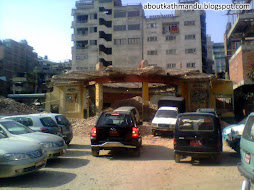





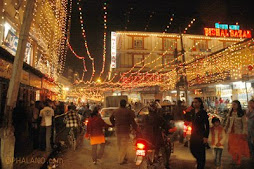













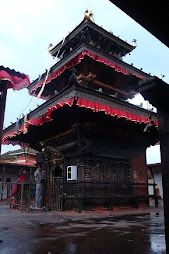






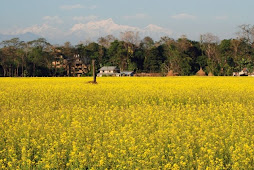



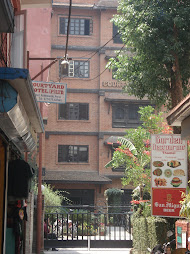










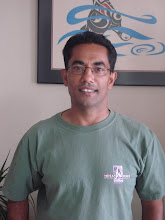

No comments:
Post a Comment